Hyperglycemia
Find your care
You receive customized, exceptional diabetes treatment and education in a caring environment. Call 310-825-7922 to connect with a diabetes specialist.
Have there been times when your blood glucose went up and you just couldn’t figure out why? There are multiple factors that can cause blood glucose to rise. Sometimes it seems that eating consistently, exercising regularly and taking your medications aren’t enough. Not all factors are within your control.
Learning about different causes of hyperglycemia can help you look for patterns and focus on improving your diabetes management. The following chart lists various factors that may affect your blood glucose.
Food
Factor: Carbohydrates
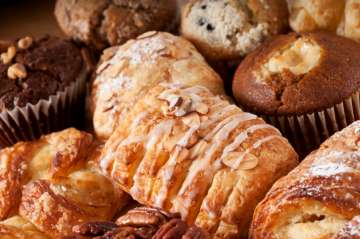
How it raises blood glucose
Of all three sources of energy from food (carbohydrates, protein and fat), carbohydrates affect blood glucose the most.
Accurately counting carbs can be challenging, and estimating an inaccurate amount can dramatically affect blood glucose. The type of carbohydrates and what other types of foods you are eating at that time will also make a difference since higher glycemic index carbs eaten alone tend to spike blood glucose more rapidly.
What you can do
- Use carbohydrate counting apps such as Calorie King, MyFitnessPal or LoseIt to help you get a better handle on carbohydrate counting.
- Try using measuring cups and a scale to check your portion size accuracy.
- Consume high-fiber carbohydrates.
- Balance your carbohydrates with lean protein and/or healthy fats.
- Work on the timing of your meal insulin dose.
Factor: Fat

How it raises blood glucose
Fatty foods can also raise the blood glucose over time, up to 3-4 hours after the meal, as well as increase insulin resistance.
What you can do
- When using an insulin pump, temporary basal rates or extended boluses (square and dual-wave) can help cover high-fat meals over many hours.
- If you take injections, you may need to take a second dose of rapid acting insulin a couple hours after your meal, or take a small dose of regular insulin at mealtime.
- Discuss these options with your team.
Factor: Protein
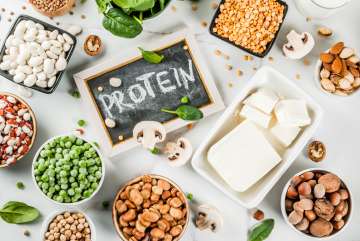
How it raises blood glucose
If you’ve ever eaten a protein-only meal with very few carbs (e.g., salad with chicken), you may have seen a noticeable rise in blood glucose (~20-50 mg/dl). Though protein typically has little effect on blood glucose, in the absence of insulin, it can raise it.
What you can do
- When eating a carbohydrate-free, protein-only meal, if you noticed you have patterns of blood glucose rising, consult your diabetes team to see if you need insulin for these meals.
- If using an insulin pump, consult your team about utilizing the extended bolus feature (square wave or dual wave) for these meals.
- If blood glucose levels are in the low end of your target range during the meal, but higher in the next 1-3 hours, then talk to your team about changing the timing of you dose to after eating.
- Another option is to add a small amount of carbohydrates to that meal that would allow you to give insulin and it might offset the protein amount/effect.
Factor: Caffeine
How it raises blood glucose
Many studies suggest that caffeine increases insulin resistance and stimulates the release of adrenaline, which can raise blood glucose at least 20-30 mg/dl. This phenomenon is particularly frequent in the morning when there is more insulin resistance.
What you can do
- When drinking caffeinated drinks in the morning you may need to take more insulin for the food you eat.
- Check to see if caffeine affects your blood glucose. For example, one day, do not have caffeine at your breakfast and then the next day eat the same breakfast but have your caffeinated drink and see how much of a difference it makes.
- You will need to consult your diabetes team for recommendations.
Medications
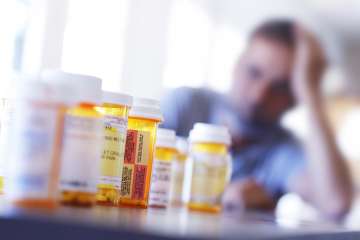
Factor: Diabetes medication doses
How it raises blood glucose
Whether taking diabetes pills or insulin injections, the dose of medication directly impacts blood glucose. In most cases (but not always), taking a higher dose of a diabetes medication means a greater blood glucose-lowering effect.
What you can do
- Work with your diabetes team to determine if adjustments are needed when you notice consistently elevated glucose.
Factor: Diabetes medication timing
How it raises blood glucose
Medication timing can also be critical. Taking your insulin at the start of the meal or after you have finished eating can lead to a higher spike in your blood glucose. This can vary among individuals.
What you can do
- Consider taking your rapid-acting (mealtime) insulin 10-15 minutes before a meal.
- Discuss the optimal timing of insulin with your diabetes team.
Factor: Non-diabetes medications
How it raises blood glucose
Medications such as steroids, niacin, statins and cold medicines may increase blood glucose.
What you can do
- Check your blood glucose more frequently if you are starting one of these medications.
- Consult the information included in all your medications.
- Discuss with your diabetes team how to manage higher blood glucose while taking these medications.
Activity
Factor: Light exercise

How it raises blood glucose
Light activity typically lowers glucose. If blood glucose drops rapidly, it is possible you may experience rebound hyperglycemia.
What you can do
- When you start to exercise, check blood glucose before, during and after to establish patterns. If you use a continuous glucose monitoring device, follow the trends.
- Discuss with your team tips to keep blood glucose stable while exercising. You will need to consider timing of the last insulin dose, type and length of exercise, and carbohydrates consumed prior to and during exercise.
- Consult your diabetes team to review effects and treatment.
Factor: High-intensity and moderate exercise

How it raises blood glucose
Exercise typically lowers blood glucose; however, high-intensity exercise (i.e. sprinting or weight lifting) can occasionally raise blood glucose. This stems from an adrenaline response, which tells the body to release stored glucose. It more commonly occurs when exercising in the morning on an empty stomach. Hyperglycemia is not a reason to avoid high-intensity exercise – studies show it can improve blood glucose for 1-3 days post-exercise. In some cases, high-intensity exercise may also drop blood glucose very rapidly, especially if you have insulin on board.
What you can do
- The best way to see how individual exercise sessions affect your blood glucose is to check prior to, during and after activity and to use a CGM to observe the effect while exercising.
- Consult your diabetes team to review effects and treatment.
Biological
Factor: Dawn phenomenon
How it raises blood glucose
The term refers to the body’s daily production of stress hormones that peak in the morning just prior to waking. During this time, the body is more insulin resistant, which may raise blood glucose.
What you can do
- The best way to figure out how, or if, dawn phenomenon affects you is to wear a continuous glucose monitoring device or wake up and check your blood glucose early in the morning.
- If you wear an insulin pump, you may need to adjust your nighttime basal rate to address the rise in your blood glucose.
- If you are on multiple daily insulin injections, there are other modalities to reduce the rise in glucose. Occasionally, splitting basal insulin into morning and evening doses or using a shorter-acting basal insulin such as NPH at bedtime may help.
- Consult your diabetes team to review effects and treatment.
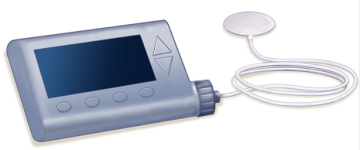
Factor: Infusion set issues
- Length of wear
- Occlusions
- Air bubbles
How it raises blood glucose
Infusion set malfunctions can lead to high blood glucose. These include: air bubbles in the tubing, an occluded cannula, an infected site, or even the location of the set. Insulin absorption can vary based on the location of your body and quality of the site. Monitor your blood glucose and see if you can tell a difference between sites.
What you can do
- If you wear a pump and your glucose is unexpectedly high, a good first step is to change your set. Glucose may run higher on the third day of wearing an infusion set. Consider changing more frequently.
- Site location may affect blood glucose.
- Absorption tends to be fastest in the abdomen, slower in legs and buttocks, and slowest in arms. Monitor your blood glucose and see if you can tell a difference between sites.
- Consult your diabetes team to review effects and treatment.
Factor: Scar tissue and lipodystrophy
How it raises blood glucose
Using the same sites on the body for injections or infusion sets can lead to lipodystrophy and scar tissue buildup. This can result in erratic absorption of insulin, leading to glycemic variability and making it harder to spend more time in range.
What you can do
- To avoid scar tissue, rotate your injection/infusion sites. Consider using a zigzag pattern or circular pattern for rotation.
- Make sure to be selecting areas with enough fat tissue. This is most often on the abdomen (further than 2 inches away from the navel), the upper buttocks, the upper outer thigh, or the back of the upper arm.
- Avoid areas of scar tissue.
- If you are having challenges finding new injections sites, consult your health team for a site assessment and suggestions.

Factor: Insufficient sleep
How it raises blood glucose
Sleep deprivation may increase insulin resistance. You may need more insulin on days following less than seven hours of sleep. Many studies have shown that not getting enough sleep leads to worse diabetes control, insulin resistance, weight gain, and increased food intake.
What you can do
- Try to get at least 7 hours of sleep per night.
- Consult your provider to see if you need to increase insulin doses temporarily on these days based on your patterns.
Factor: Stress and illness
How it raises blood glucose
Stress and illness may cause the body to release epinephrine (adrenaline), glucagon, growth hormone, and cortisol. As a result, more glucose is released from the liver and the body can become less sensitive to insulin.
What you can do
- Discuss with your diabetes team how to adjust your insulin when you are under stress.
- Exercise, time outside, and meditation may be helpful to combat stress.
- Consider stress management strategies such as medication, mindfulness and yoga
- Finding and working with a counselor may also be helpful.
Factor: Allergies
How it raises blood glucose
Some patients report higher glucose levels when they have active seasonal allergies. Some have speculated that it’s due to the stress hormone cortisol.
What you can do
- You may need to increase your basal rate or long-acting insulin during allergy season.
- Discuss with your diabetes team how to adjust your insulin.
Factor: Glucotoxicity
How it raises blood glucose
Having high blood glucose for many hours or days may cause insulin resistance. This is referred to as “glucotoxicity.”
What you can do
- Work with your team to develop a plan for how to deal with persistent hyperglycemia
Factor: Periods (menstruation)
How it raises blood glucose
There is no definite answer to the question of how menstrual cycles affect women’s blood glucose. Many women report having higher blood glucose levels a few days prior to their period starting, but some women notice a sharp drop in glucose levels.
What you can do
- Your best strategy is to check more often during your cycle to establish a pattern of control and insulin requirements.
- Once a pattern is established, work with your diabetes team to develop strategies to manage your blood glucose.
- Wearing a continuous glucose monitoring device to track trends can be very helpful.
Factor: Smoking
How it raises blood glucose
Some studies suggest that smoking may increase insulin resistance, and people with diabetes who smoke are more likely than nonsmokers to have trouble with insulin dosing and managing their diabetes. Smokers are also at higher risk for other serious complications.
What you can do
- Smoking cessation is highly recommended.
- Consider checking more often to see if there is a trend with smoking.
- Work with your team to adjust medication to meet your needs.
Other factors
Factor: Ineffective insulin
How it raises blood glucose
If your insulin is normally clear, but suddenly turns cloudy, that could signal it has gone bad (note: NPH is always cloudy).
Aside from a change in appearance, it can be hard to know if a vial or pen of insulin has actually gone bad unless you try a new one.
What you can do
- If you have unexplained high glucose, consider throwing out your pen or vial and open a new one.
- Unopened insulin should be stored in a refrigerator at approximately 36-46°F. According to the FDA, insulin can be left unrefrigerated at a temperature from 59-86°F for up to 28-42 days depending on the type of insulin and delivery mode. NPH insulin may become ineffective after 14 days of use.
- Consult your diabetes team if you believe your insulin is not working.
Factor: Inaccurate blood glucose reading
How it raises blood glucose
If a reading seems higher than you expect, it could be due to an affected blood sample. Hands not being clean or dry or having expired test strips can alter the results.
What you can do
- If a reading seems higher than you expect, recheck your blood glucose after making sure your hand are thoroughly clean and dry.
- Check that your test strips are not expired.
- If you wear a continuous glucose monitoring device, you can compare values with your meter.
Factor: Altitude
How it raises blood glucose
Reports have shown that altitude can increase insulin resistance due to cortisol release.
Your meter may also be the culprit, as some do not read as accurately at high elevations.
What you can do
- You may need more basal or long-acting insulin. However, if you go to a high altitude for activity (e.g., skiing), you may find that you need less insulin.
- Consult your diabetes team for specific recommendations.
You may find there are other factors that affect your blood glucose. Keep track of them and share them with your diabetes care team. Remember that monitoring regularly and using a continuous glucose monitoring device can help you detect patterns in your blood glucose that will help you and your care team make adjustments as needed.
Treating high blood glucose (hyperglycemia)
If you are feeling symptoms of high blood glucose such as excessive thirst, frequent urination, and blurred vision check your blood glucose.
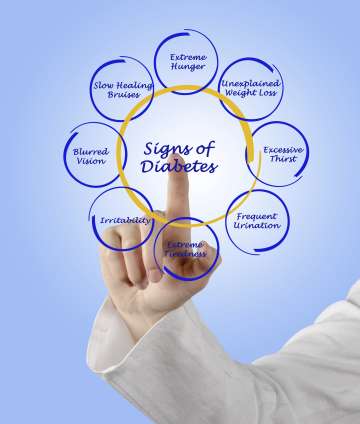
If your blood glucose is greater than 300 mg/dL for more than six hours or below 70 mg/dL after repeated treatment, refer to the Sick Day plan section.
- Check your blood glucose at least every four hours.
- Consider checking ketones in the urine.
- Call your health care provider if your blood glucose is not decreasing or if your symptoms get worse.
- Drink water or sugar-free liquids to prevent dehydration.
- If you take insulin – you may need an extra dose.
Always ask your health care provider about taking extra insulin. - Increase your physical activity – a 30-minute walk can lower your blood glucose.
How to prevent high blood glucose in the future
- Evaluate your meal plan.
Work with a dietitian or diabetes nurse educator to review how your insulin is matching your food choices. - Increase your physical activity.
Physical activity helps to decrease insulin resistance and lower blood glucose. - Discuss your medications with your health care provider.
DO NOT change your medications on your own without prior instruction from your team. - Lower stress and get more rest.